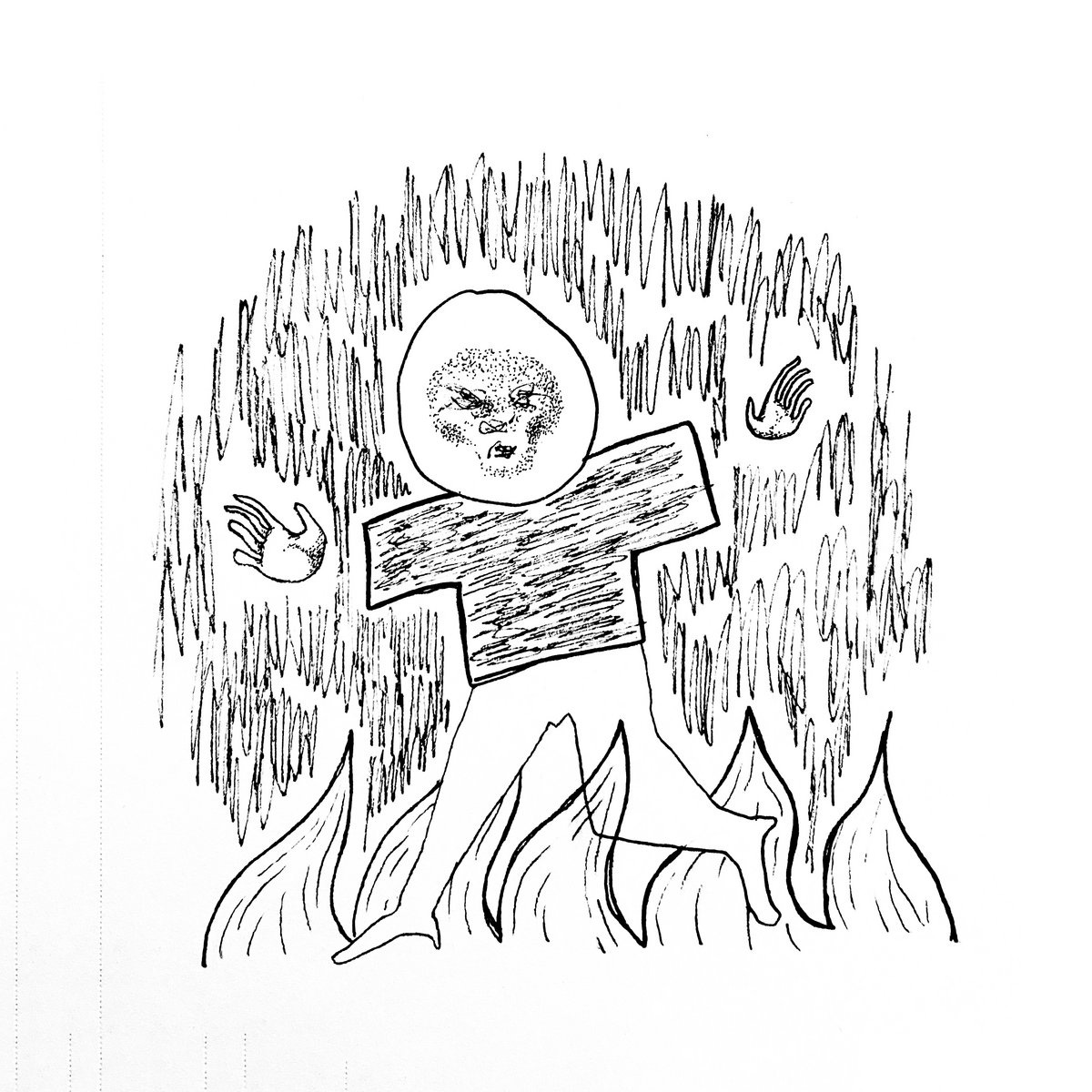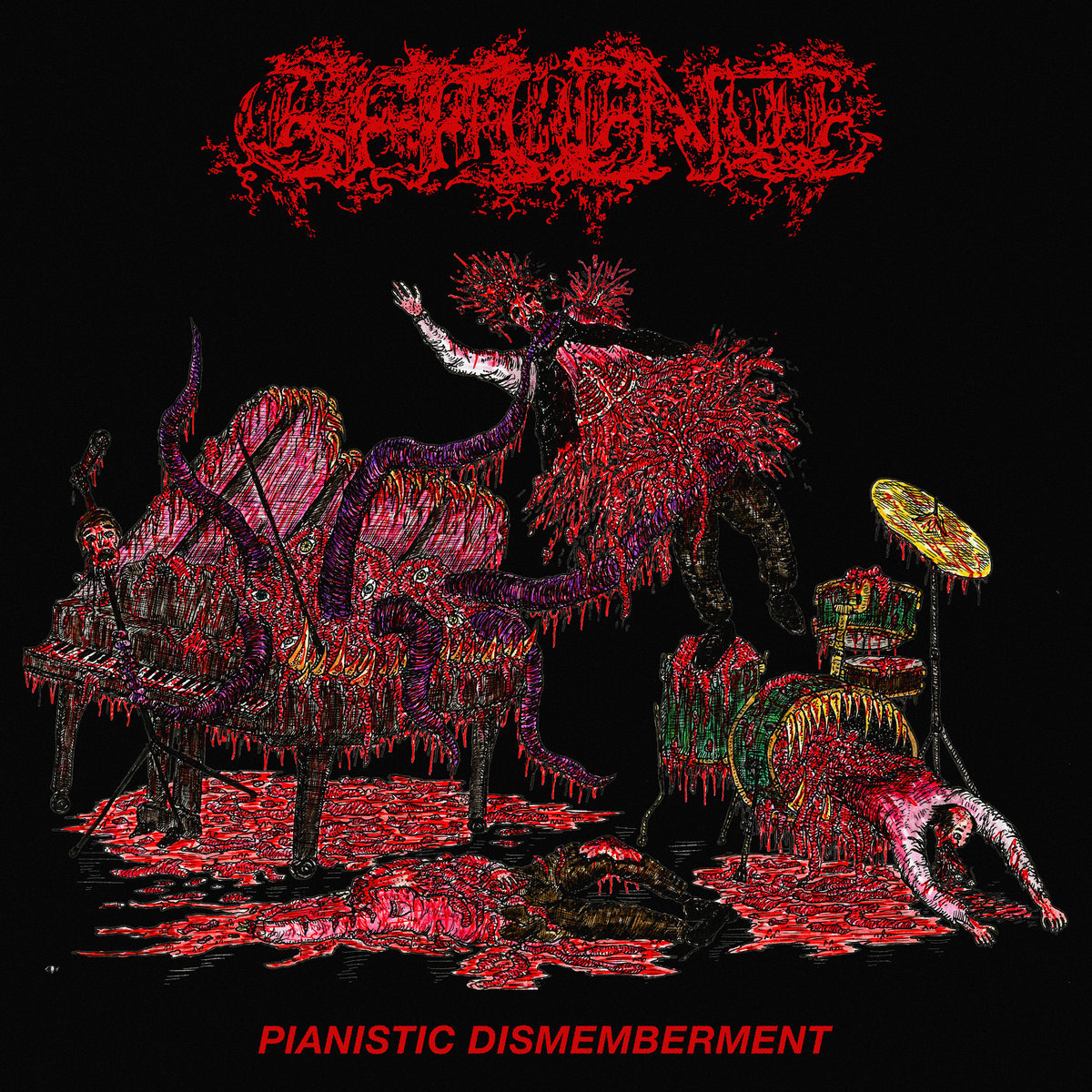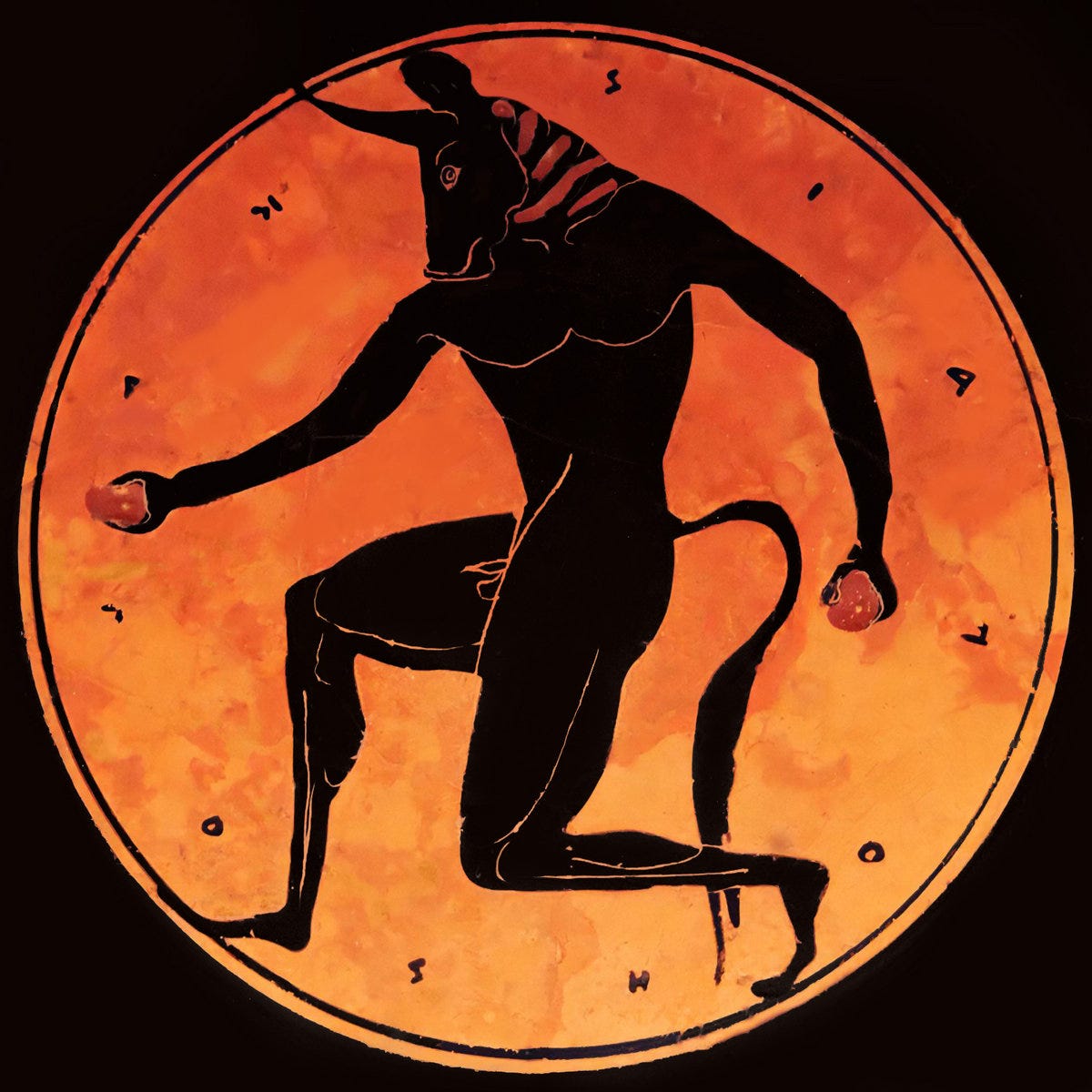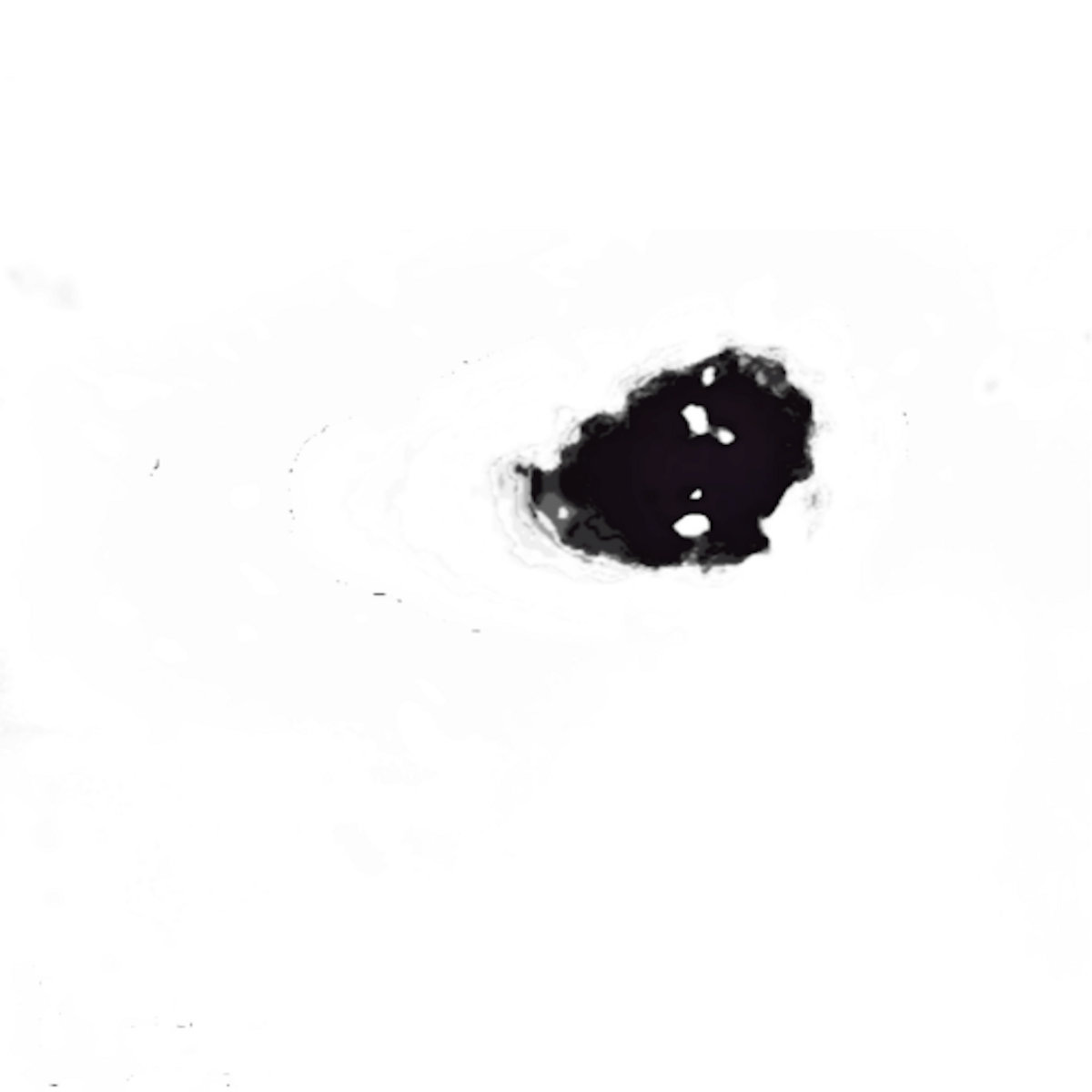
DAA is back for a "Quarter 1" round-up of sorts—although, as I said in my preface to the last round-up, I don't intend to determine any regular intervals for issues in advance. A three-month window felt right again this time, with a month's overlap to account for a couple of albums from January I missed (well, just one, really). But there's a lot of stuff coming out in just the first week or so of April that looks pretty interesting, so perhaps the next issue will cover just that month, or maybe April thru May (plus any leftovers March serves up). In any case, here's the stuff that came out between January and March of this year that I felt compelled to write about. Also: thanks again to Winona Zinola for providing the banner image for this issue—check out her Substack here!
Molasses - Ring of Fire (self-released, Jan 15)
Thanks to my on-call bluegrass/Appalachian specialist Alex for tipping me off to this one. I'm typically wary of "experimental" folk that incorporates electronics, noise, or other bells and whistles—there's a tendency toward superfluous or eclectic ornament that either obscures what's interesting/unorthodox about the source tradition or adds garish streaks of highlighter to it. But the synthetic material on Ring of Fire presents itself as welcome company to the porch-light jam sesh rather than as a haggle of overcurious or ethnographically crude wayfarers. The distortion, feedback, and lo-fi recording all serve to concretize an electricity that already lies just beneath the surface in the sociality of this music and its form. Just as the fiddle generates frequencies that clip and saturate the aural field in a heated shimmer, so too does the crackle of broken analog murmur, shout, and stomp in erratic accompaniment to round after round of sublimated melancholy and stubborn merrymaking.
Wolkokrots - Nelinetrolls (Steep Gloss, Feb 7)
I was first drawn to Nelinetrolls because I immediately recognized the cover art as the work of Nick Hoffman—one of my favorite electronic musicians of the past decade; his drawings have the charm of medieval manuscript marginalia done in crayon instead of ink and watercolor. I was kind of surprised by how quickly the ambience of this record drew me in; I tend to gravitate toward the nakedly formal rather than the ostensibly amorphous. All of the cuts on Nelinetrolls roll forward with a slow but steady pulse, in the manner of a thick bank of fog drifting across marshland—it recalls the strengths of Matthew Revert and Vanessa Rossetto's collaborative work. There's lots of layers to it, but they don't crowd each other out: the ambient tonal rumbling, field recorded snippets, low-key percussion, and menagerie of electronic pips, squeaks, buzzes, rattles, and other chatter throw a blanket over the entire frequential spectrum; sounds shift, emerge, and dissolve in respective proportions. One gets the impression of a tapestry with an impeccable balance of interweaving patterns, even as a couple of tracks shine a soft spotlight upon a particular element of the soundscape; I especially appreciate the languid harpsichord on "Hexaputon." Perfect music for a rainy day.
Chow Lee - GIRLS CUM FIRST! (TC Music LLC/EMPIRE, Feb 14)
This didn't hook me at first, but it grew on me. I think Chow Lee succeeds here where he faltered on SEX DRIVE: a lot of the balladry on the second half of that album came off as a bit indistinct and gummed up the flow of the record; GIRLS CUM FIRST!'s slow jams display more rhythmic subtlety. The eponymous refrain of "yes mami!" lands at the end of every bar, lending the song a steady sway that anchors a skittery but soft drill pattern—it's surprisingly tasteful and not at all obligatory. "krazy 4 u" is just as laid back and pared down, with a muted sample whose development consists of light flourishes of synth and percussion that melt away upon impact like raindrops in a puddle; the laser-hum of the bass and Chow Lee's mid-range crooning anchor it all with a warmth that saturates without drowning out. "lemme get ya #" is the song that adheres most closely to the sexy drill template set by Chow Lee and Cash Cobain; it's an idiom that hit its limit of cultural diffusion and variation rather quickly, and I honestly don't know how much it piques my interest in 2025. But it's nice to see one of the progenitors doing something interesting (if not novel) with the formula.
GAX [Seymour Wright & Vasco Alves] - the traditions / as tradiçōes (Infant Tree, Feb 15)
I don't know if there's a saxophonist alive who can blow my mind as consistently as Seymour Wright does. He tarries with such assurance amid the fray of his instrument's timbral limits—this listener's mental image is less that of a reed under intense vibratory strain and more that of a detuned oscillator buzzing in one's ears. Throw Vasco Alves's bagpipes into the mix, and things just get funkier: the harmonic color intensifies, precluding the stable resolution of emergent frequencies to an even greater degree. This short record succeeds at a lot of the effects that drone music so often aspires toward (but only seldom realizes).
Effluence - Pianistic Dismemberment (Putrefactive Recordings, Feb 26)
I've been thinking a lot about something my friend Sunik Kim said about the stupid and sublime in a conversation with another friend of mine, Vincent Jenewein, for his Substack Infinite Speeds:
[A]ll of my favorite music really sits on that tightrope between total stupidity—almost to the point of self-parody—and being something genuinely ecstatic and singular. All great music has to tow that line for me, and every time something is super self-serious and consciously ambitious, I’m just turned off immediately because it’s like, you’re being too confident, you’re not subjecting yourself to the possibility of being like maybe this thing I’m doing is actually just really fucking stupid.
This is probably the release from this past quarter that most unapologetically exhibits the truth I find in this statement. Extreme metal in general has a high tolerance for the staging and execution of self-indulgent premises, but it's only so often that one sees this coupled to a genuine tarrying with aesthetic form beyond timbral substitutions applied to extant structures. On the face of it, that's what's going on here: as the liner notes say, "no guitars on this album… 'cause piano ate em :[." Does the piano-playing on Pianistic Dismemberment only recall tech-/avant-death guitar noodling, though? Sometimes it surely does, especially in the lower register when the vibrations of the piano strings are distorted so as to mimic an electric guitar. But other points of reference come to mind—Cecil Taylor's free jazz playing or Nancarrow's player-piano studies, for one; the record's pace is set just as often by arhythmic cascades of clustered notes and percussion as it is by the parodically accelerated metered patterns that metal tends to work with. The music ricochets between two forms of motion: one of free movement where rhythm is a volatile emergent property that can appear and disappear at any given time; and another of discrete movement that, when pushed to its limits, can approach moments of freefall or arhythmia. The result is a whiplash of the highest order, where initial disorientation resolves amid the tumult into sheer glee.
Smiqra - Rɡyaɡ̇dźé! (self-released, Mar 7)
Speaking of metal and the stupid/sublime (or "stuplimity," as Sianne Ngai put it), the artist formerly known as Ὁπλίτης [Hoplites] has come out with a new project under a new name. It's a step further in the jazzy and self-consciously silly direction broached on last year's Παραμαινομένη, trading out the hyper-syncopated, dancefloor-oriented djent that defined that record in favor of more traditional, full-steam-ahead death metal, while adding a dash more skronk (the sax solos!!) for good measure. I tend to distinguish and preference metal subgenres on the basis of rhythm and tempo, in the same way I would dance music; I think what I find most endearing about Ὁπλίτης/Smiqra's work is how deftly it fills in different rhythmic templates from various metal musics with a basically similar content and mode of production—i.e. sharp atonal riffage rendered with a killer midrange and stereo panning that highlights devilishly clever guitar tracking—thereby lending his oeuvre both non-trivial variety and a distinct unity.
Los Thuthanaka [Chuquimamani-Condori & Joshua Chuquimia Crampton] - Los Thuthanaka (self-released, Mar 22)
The Crampton siblings have done it once again: Los Thuthanaka is the ideal fusion of the strengths of both CM-C (fka Elysia Crampton Chuquimia) and JCC's music. CM-C, in particular, has honed a new sonic palette via their DJ sets over the past several years that revels in a bustling maximalism—an aesthetic first (and somewhat messily) probed in their early work as E&E before receiving renewed attention and development a decade or so later—as well as a progressively intensive and ever-more playful experimentation with the rhythmic nuances of the Andean and Bolivian indigenous traditions that CM-C grounds their music in. The first time this all came to bear upon a recorded project was 2023's DJ E—an album that felt in many ways like a culmination and refinement of all CM-C had put out up to that point. Los Thuthanaka, however, doesn't sound quite like anything they've done before: JCC's guitar and bass parts add a distorted edge and heaviness to the riffs that allows these pieces to crush harder and ascend higher; what's more, CM-C hasn't given their rhythm-driven work this much time and space to develop since 2015's American Drift. Their music has always felt incredibly powerful and transportive to me, but I've never seen them dwell so defiantly in the blast radius of the sublime as they do on this album.
Mirin Mary - Nayami No Tabi 悩みの旅 (weeding, Mar 26)
An enigmatic drop from label/digital radio station weeding, whom I've profiled before for Bandcamp Daily's tape label report; it's their first in almost two years. The liner notes aver that Mirin Mary—a duo comprising Eiji Tominaga and Aki Goto—was "born from the [Tokyo?] freak folk and improvisational underground." But this is a scene that is more or less completely unfamiliar to me. Amid the swathes of stage-setting ambience, the most distinct element of the soundscape is typically Goto's violin, which plucks, scrapes, and sustains alongside whatever bit of electronic bric-a-brac Tominaga opts to voice, creating a pensive kind of contrapuntal movement. "二" and "九" exhibit this dialogue in the form of a drone; on "八," Goto delivers sharp and erratic attacks on her violin as Tominaga punctuates the spaces in between with light and brief chords, like brushstrokes.
The standout tracks here are "十一" and "十," on which Tominaga's piano-playing comes to the fore: "十一" is a melancholic lilt featuring only piano and violin, and it reminded me immediately of Radiohead's "Pyramid Song"; "十," by far the longest track at just over 11 minutes, follows an ever-shifting call and response between what sounds like a reed instrument, violin, and Goto's extremely high-pitched voice—all of which is paced and anchored by an arpeggiation in the piano that very gradually grows louder and quicker, leading to a dramatic sense of unfolding over "十"'s runtime. I'm not sure how to add up all the pieces of this record, or how to put it in any sort of proper context. But it's hard to shake off the intimacy that emanates from these recordings; they have the aura of a time-capsule.
LA Timpa - IOX (Relaxin Records, Mar 28)
I wasn't familiar with LA Timpa's previous work until IOX prompted me to give it a shot. A quick glance at RYM allowed me to immediately clock his milieu as that of the '10s UK "hypnagogic" underground (Hype Williams, Mica Levi, etc.)—hence, this latest from Relaxin Records, run by Lolina (fka Inga Copeland/ex-Hype Williams). I find IOX more compelling than those earlier releases: its sample 'n' drum rhythms are jerkier, beholden more to their own push-pull mechanism than to the lines of a grid; the mix is messier, but also fuller-sounding. It sorta sounds like Tirzah if you were to blur and detune the sampling and instrumentation, diffuse the vocals into the broader ether, and throw a little more stumble into the music's step—the overall effect is pleasantly unsettling. IOX conjures a narcotic oomph that's missing from a lot of what's followed in the wake of '10s hypnagogic/bedroom/dream/etc. pop production, eschewing blissful detachment or hazy nostalgism in favor of a hard-to-place sense of suspended animation that drifts between comfort and disquiet.
Thank you for reading! Onward, we march.












